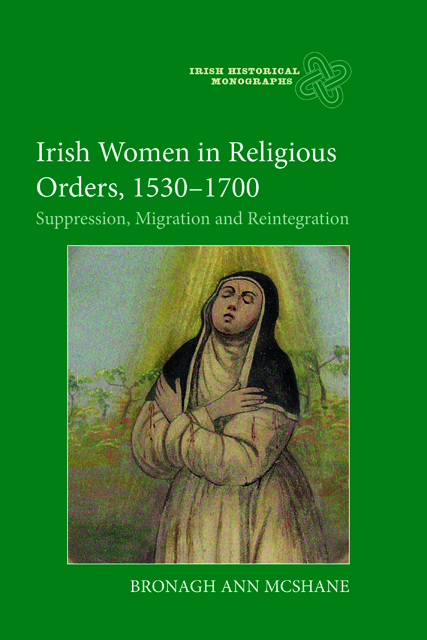Summary
Writing in 1725, Stephen Radcliffe (1678–1732), Protestant rector of Naas in County Kildare, lamented the presence throughout Ireland of several ‘monasteries and nunneries’, and particularly
a famous convent … in Channel Row in Dublin, where the most celebrated Italian musicians help to make the voices of the Holy Sisters more melodious; and many Protestant fine Gentlemen have been invited to take their places in a convenient gallery, and hear the performances.
The ‘famous convent’ in question was the recently established Dominican convent founded by a cohort of sisters from Galway just eight years previously. These sisters had arrived in Dublin from Galway in 1717 and shortly thereafter took up residence in the Channel Row premises formerly occupied by Benedictine and Poor Clare communities. There, led by Prioress Mary Bellew, they turned their attention to securing this new Dublin house as a viable religious institution. Radcliffe’s reference to the presence at the Channel Row chapel of ‘celebrated Italian musicians’ who accompanied the sisters’ ‘melodious’ voices during mass and which, in turn, drew crowds from among the Protestant elite, points to the centrality of the Channel Row convent within the cultural milieu of Ireland’s capital city at the beginning of the eighteenth century. Furthermore, it highlights the foundation’s position within the wider sphere of European Catholic musical performance and its clear reputational prestige as a centre for liturgical recital. This was a remarkable achievement for a fledgling foundation operating in the context of ongoing legal proscription on the western periphery of Europe.
Despite the uncertainty and turbulence of the previous decades, the enterprise of female religious, led by the traditional medieval orders of the Dominicans and Franciscans, had remained. As the eighteenth century progressed, female religious orders would continue to perpetuate so that, by 1750, there were 12 houses of female religious belonging to four distinct religious orders: two houses of Poor Clares (Galway and Dublin); four houses of Dominicans (Galway, Dublin, Drogheda and Waterford); four houses of Carmelites (Galway, Loughrea, Cork and Dublin); and two houses of Augustinians (Galway and Dublin). However, this was the same number that had been in operation a century earlier, on the eve of the Cromwellian campaigns, demonstrating how detrimental the upheavals of the second half of the seventeenth century had been to the growth and development of female religious life on the island.
- Type
- Chapter
- Information
- Irish Women in Religious Orders, 1530-1700Suppression, Migration and Reintegration, pp. 247 - 252Publisher: Boydell & BrewerPrint publication year: 2022



